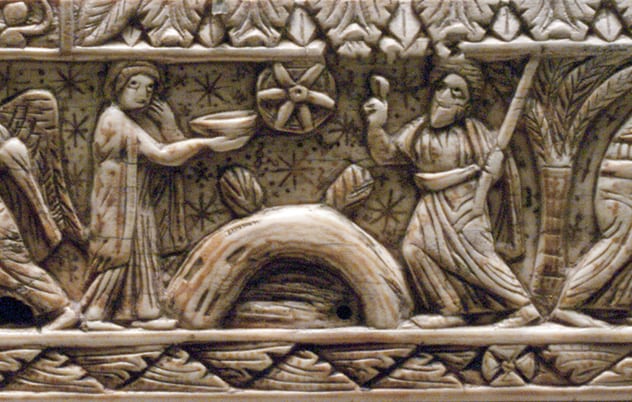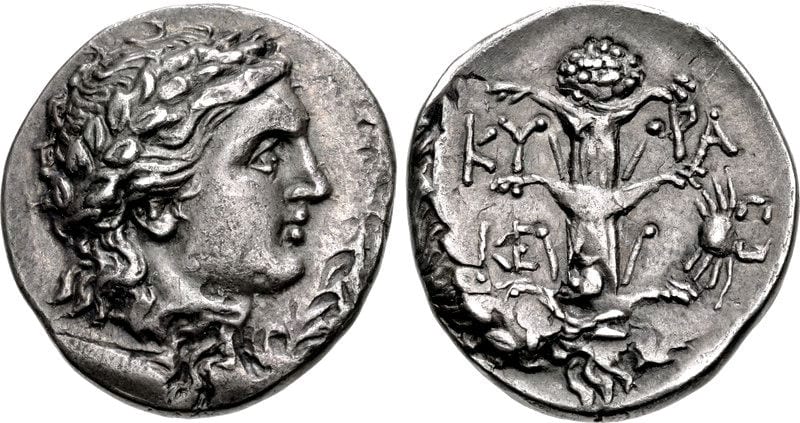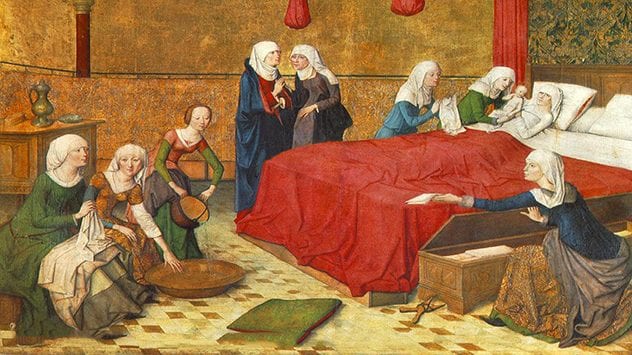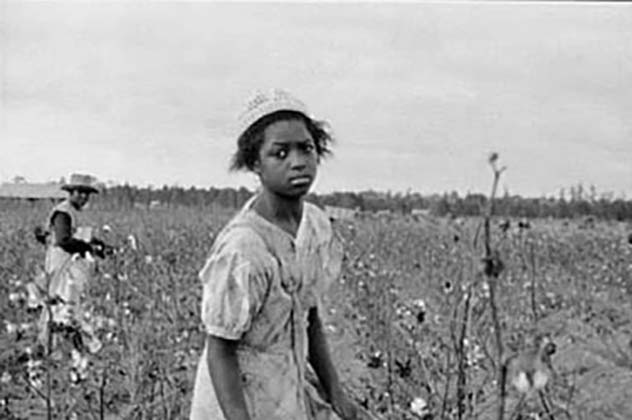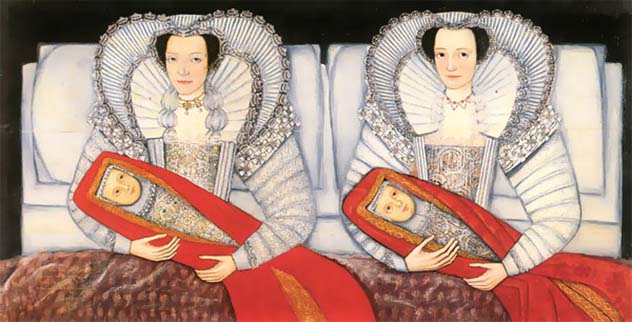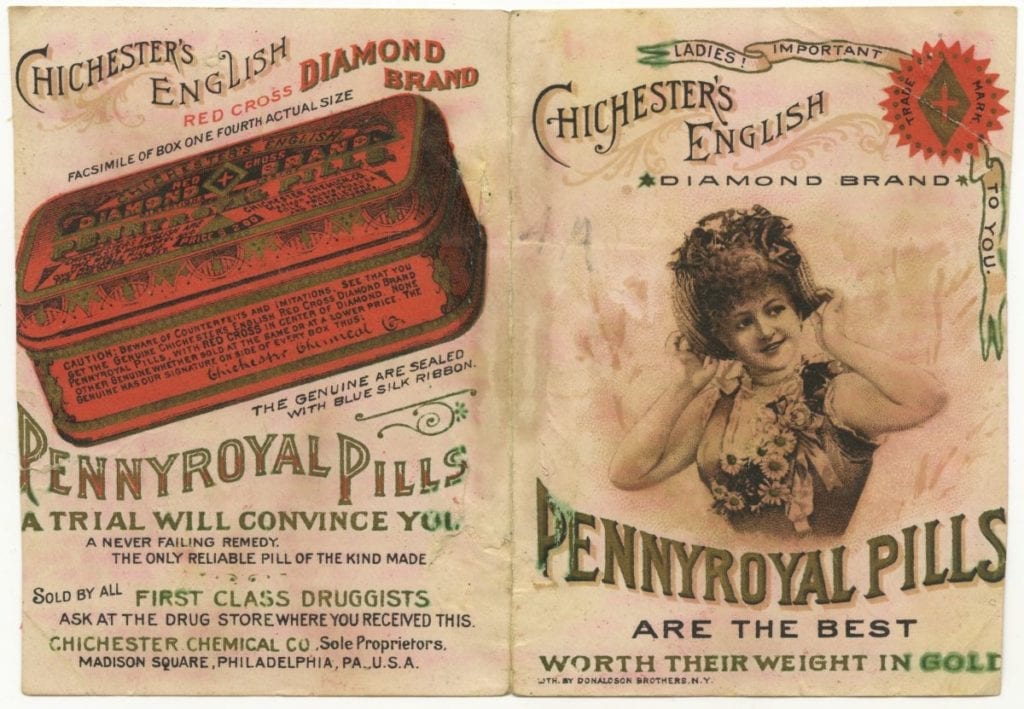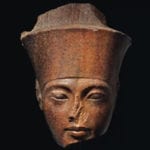SEE ALSO: Top 10 Abortion Survivors
10 The Ordeal of Bitter Water
The Ordeal of Bitter Water is a ritualistic trial that is speculated to involve the ingestion of an abortifacient. The ordeal is only recorded in detail in 5:11-31: of the Book of Numbers, the fourth book in the Hebrew Bible. A case of a woman accused of adultery by her husband that, due to a lack of evidence, is handled by a priest rather than the courts. At the time priests had the knowledge and authority to administer “medicine”, in the form of potions and curses. The effectiveness of most potions are unclear. The priest prepares “holy” water for the woman to drink. They mix dust from the floor into the water to “increase the sacredness of the drink and its danger to the woman who will drink it.” The only role the woman has in the ritual is to consent to the procedure and to the priest’s oath of truthfulness, then drink. She has no right to refuse nor any right to put her husband on trial for the same crime. Her sexual activity and consent was dictated solely by the men who owned her, be that father or husband. This casts a curse on the woman meant to cause a miscarriage if the woman is pregnant with another man’s child. It’s even possible permanent sterilization was the goal. “If guilty, the woman will experience bitter pain, her uterus will drop, and her womb will discharge. If innocent, the woman will be immune and able to conceive children.” Nothing mentioned in the bible includes any herbs known as abortifacients at the time in this context. Some historians argue that the result would be death regardless of guilt, either by poisoning or being stoned.[1]
9Silphium: Eaten to Extinction
Silphium was a plant that Ancient Romans, Greeks, and Egyptians harvested to extinction thousands of years ago. They cooked its stalk for food, its flowers were used for perfume, and its roots and resin were used for medicine. They favoured silphium’s sap as a contraceptive. Pliny the Elder, a Roman scholar, wrote of how silphium was inserted into the vagina “with soft wool as a pessary to promote the menstrual discharge.” He also wrote this regarding Silphiums medical properties, “treatment of leprosy, to restore hair, cleanse retained afterbirth from the womb, and as an antidote for poisons” Soranus, a physician of the second century AD, claimed silphium could abort a pregnancy. Although the plant was used in this way, this doesn’t mean that it was effective. The Greeks used pomegranate seeds, which is shown to reduce fertility in lab animals. Queen Anne’s lace (wild carrot) seeds are still used today as birth control and is known to weaken the uterus lining by hindering the production of progesterone. If several abortifacients were taken at once, it’s possible that there was confusion about what herbs were actually effective. Side Note: Emperor Nero, the last Julio-Claudian Emperor of Rome, reportedly ate the last piece of silphium at the end of First century AD. It was gifted to him as an “Oddity” which he promptly consumed, no doubt without asking about the plant’s use first. Asafetida, another less popular spice, took silphium’s place as the primary medical and culinary herb.[2]
8Surgery and The Lacedaemonian Leap
Herbs weren’t the only options used to attain abortion in the ancient world. The Hippocratic Corpus, a collection of physician Hippocrates’ medical teachings, describes an active method called the “Lacedaemonian Leap.” This involves vigorous jumping, making sure that the heels of the feet touch the buttocks during each leap. Apparently, this was supposed to induce a miscarriage. One author tells of how he prescribed this method to a young prostitute that one of his relatives owned. Apparently, “She followed his instructions, and at the seventh leap the ‘seed’ fell out…” Surgery was known to be the most dangerous method, only to be performed in the most desperate of situations. Celsius describes the surgical removal of a deceased fetus as “If the head is nearest, a hook should be introduced, in every part smooth, with a short point, which is properly fixed either in the eye, or the ear, or the mouth sometimes even the forehead; and then begin drawn outwards, bring away the child:” Such invasive instruments presented a great deal of danger to the woman. They used surgery only in the removal of deceased fetuses and not as a means of causing a miscarriage to occur. The distinction between induced and involuntary abortion held a great deal of weight in cathartic law. Cathartic law wasn’t prosecutable, rather it was a measure of purity of character. Although Aristotle believed in Devine Law, that abortion should only be procured before the embryo shows signs of life and sensation, he did also recommend abortion as a way to control population growth. Only the Pythagoreans opposed abortion, believing that “The embryo was imbued with life from the moment of conception.”[3]
7Witchcraft and the Witch-Hunting of Midwives
Fourteenth century and beyond, Midwives were prime targets of persecution. Most abortifacients are classified as emmenagogues, which are herbs consumed to induce menstruation. Such herbs tended to have a high concentration of essential oil. That being said, not all emmenagogues are abortifacients if the herbs aren’t strong enough to induce abortion. During their four hundred years of oppression, many midwives used the term ‘emmenagogues’ as a substitute for ‘abortifacients’. They did this to avoid being outed as midwives and imprisoned. Herbs commonly used by midwives include Barrenwort, Stinking Iris, Crow soap, Snake Plant, Wake Robin, and many more. Families and villages obtained medical advice from midwives, who was usually without a degree. Executions—generally burning at the stake—claimed millions of lives, 85% of which were women and girls. The persecution was so brutal that in 1585 several villages in Bishopric of Trier were left with only one woman each. The ‘potions’ weren’t perfect. They often used ‘magic’ to decide when they administered herbs and poisoning was possible. But those risks likely weren’t the reason the law targeted midwives. The monopolization of medicine for the political and economic gain of predominantly male doctors might have lead an organized power-grab against feminine ‘folk’ medicine. The ‘logics’ of medicine changed from herbs and potions to humours, bile, and Aristotle-Christian theology. These new methods were less effective, so the existence of the ‘old’ medicines threatened the new medical and church doctrine. The rise in capitalism was threatened when healers served the peasant population for low or no cost. Unfortunately, if this was a war between the genders and classes, the ‘witches’ lost. “… the witch herself—poor and illiterate—did not leave us her story. It was recorded, like all history, by the educated elite, so that today we know the witch only through the eyes of her persecutors.”[4]
6 Sex Positivity in Early Islam
Given the fact that Islam is very pro-family, believing that children on gifts from God himself, it is unsurprising how sex-positive early Islamic writers were in their text. What is surprising, however, is the prevalence of information on contraceptives in Arabic texts. Muslim and non-Muslim authors alike wrote more about their methods of contraception than the christian west. Arabic writers focused on coitus interruptus and coitus reservatus. Coitus interruptus, or pulling out / withdrawal, needs little explanation and was as effective then as it is now. Coitus reservatus is similar to the pull-out method, instead focusing on avoiding ejaculation within the partner. Sex was strictly seen as an act between man and wife, so all methods were only regarded within this context. Islamic physicians mention the blockage of semen from the uterus using several methods and ingredients. Elephant dung, ox bile, pomegranate skin, and tamarack gum. Semen could even be ‘probed’ out using root of mallow inserted into the womb. He warns against probing too deeply or too quickly and to tie the probe to the thigh and leave it in for a full night. He also advised expelling the semen by fumigating the vagina, jumping up and down, sneezing, or even shouting in a loud voice. The probe and blockage method was probably more effective than shouting, although probably less sanitary. His writing and many others were translated and exported to the West. Although ‘magical’ methods were also included, such as magic amulets and spells, these texts were still the most knowledgeable writings on contraceptives of their time.[5]
5 Imperial China
China is known for its ‘rational family planning’, a system of birth control that had been in practice for some time. “Birth control” for the Imperial Chinese included contraceptives, abortion, and even sterilization. Li Bozhong, a professor of History, claims that “by the Qing, natural fertility had disappeared in Jiangnan, because of widespread and effective abortion and other means of fertility control…” Some historians argue that abortifacients were used only by ‘elite women’ for ‘menstrual blocking’. It gave these women more control over bodies than others of lesser social status. The biological duties of childbirth was forced onto their maids and concubines. Historians claim that the abortifacients used were easily accessible and safe. “Not all women were victims of their wombs. Women could and did act to control their own fertility” However, it is equally possible that abortion was only used in “emergencies” if the pregnancy was a threat to the woman’s health or social status. Specifically, abortion was a way of hiding a woman’s extramarital affairs. There is also evidence that some woman, too ashamed to visit a doctor, tried to induce abortion on their own. This often resulted in partial abortion and hemorrhaging because of the toxicity of the drugs taken.[6]
4 American Slave’s Cotton Contraceptives
In 1662, Virginia Lawmakers passed “partus sequitur ventrem”, a legislature that rendered children of enslaved women as slaves themselves. Similar laws spread throughout the American south. Slave reproduction allowed slavery to flourish, strengthening the number of slaves and the idea that slavery was the innate role from black people. It gave slave owners incentive to “breed” slaves both with each other and with themselves. Sexual assault on slave woman was commonplace, even encouraged. Although many enslaved women enjoyed the company of their children, many didn’t want to bring them into a world where they’d be mistreated. Infant and maternal mortality rates were high due to the harsh working conditions while pregnant and postpartum. Slaves would sneak cotton roots to chew on to avoid getting pregnant if sex couldn’t be avoided. A former slave, Mary Gaffney, recalls being forced to ‘breed’ with a fellow slave man, “I just hated the man I married but it was what Maser said do…?I would not let that negro touch me and he told Maser and Maser gave me a real good whipping, so that night I let that negro have his way…?but still I cheated Maser, I never did have any slaves to grow and Maser he wondered what was the matter. I tell you son, I kept cotton roots and chewed them all the time but I was careful not to let Maser know of catch me, so I never did have any children while I was a slave. Then when slavery was over I just kept on living with that negro, his name was Paul Gaffney. Yes after freedom we had five children, four of them is still living.” Many slave women evaded their owner’s attempts to force pregnancy on them, choosing only to start a family after they were emancipated. The gossypol in cotton roots might have been toxic enough to prevent pregnancy, but high birth rates suggest it was less than foolproof.[7]
3 Quickening
During the thirteen century, abortion was an ecclesiastical offense, subject to different sentences. Whether they would give the guilty party one sentence or the other depended on one factor. Was the abortion of a quickened fetus? It was believed that life manifested when the fetus first stirs in the womb. This point was called the “Quickening”, meaning “coming to life”. This moment occurs at different times during different pregnancies but forty days was the accepted point at which a fetus become ‘human’ enough for an abortion to be a ‘quasi homicide’. This sentiment was rarely used in criminal law. On the contrary, homicide was charged only if the woman died or if they killed the fetus outside of the womb. Even a quickened fetus aborted in a stillbirth was rarely, if ever, charged as murder. Especially in situations where only the woman herself was privy to the abortion, making it impossible to prove that the woman was even pregnant to begin with. Medicine herbal manuals were the main source of knowledge about abortifacients. Herbs such as pepper, sage, madder, and laurel were used to both to encourage labor to cause miscarriages. These potions caused vomiting and painful bowel movements. If that didn’t work, bloodletting from the feet was used to “remedy for blocked menstrual periods.”[8]
2Madame Restell’s Patent Medicine
Madame Restell was the most famous abortionist in New York. She, her husband, and her brother sold patent medicines and birth control from 1830 to 1877. Abortion was a lucrative business, so much so that abortionists competed in the penny press using advertisements in the regulatory free climate. Such news was as sensationalised as it was scandalized. Unlike the midwives of past centuries, Restell refused to hide in fear. The papers targeted her as a dangerous agent of change. Restell was quick to challenge her hecklers, offering $100 to anyone who could prove her medicine was harmful. She dared them to arrest her. Soon, they did. When she went unprosecuted and was released, they did so again and again. It took several trials for Restell to be found guilty for abortion and child-napping charges. Restell served a year at Blackwell Island. Restell was so shaken upon release that she vowed she’d never go back to jail. Restell moved her business uptown and became covert, escaping prosecution for a while. Anthony Comstock, an anti-vice activists, went to Restell claiming he needed contraceptives for his wife. Visiting again, he came with police and reporters. Her business was searched and Restell was indicted. But when Restell said she’d never go back to jail, she meant it. On her trial date, Restell didn’t show. Her maid found her dead in the tub with her throat cut. Reporters were allowed to parade around her apartment and even inspect her body. They ruled her death a suicide. Comstock denied any wrongdoing.[9]
1 Infanticide
In many of the places and time periods mentioned previously, population control wasn’t always confined to preventing or ending pregnancy before birth. Infanticide, the killing of newborns, is regarded differently from abortion and contraception in the method, morality, and repercussions. It was common in pre-industrial societies, and less likely to be condemned morally and legally. Infanticide was a survival technique in times of food shortages. If the child was likely to die anyway, they viewed infanticide as a less painful mercy. Deformities, illegitimacy, or not being the desired gender played a large factor in whether the child lived or died. Sex-selective infanticide was common for females in China, India, Tahiti, and North Africa. The patriarchal figures of society usually made the decision. Both religious sacrifice and religious condemnation of infanticide can be found in several religions. It wasn’t a solely a primitive practice as Ancient Greek and Roman philosophers such as Aristotle also recommended infanticide to control population. Christian and Jewish texts both openly condemned the practice even in their earliest days. Slaves sometimes killed newborns to avoid subjecting them to a life of slavery.[10] About The Author: Archer Setterfield is a Canadian researcher and freelance author.
